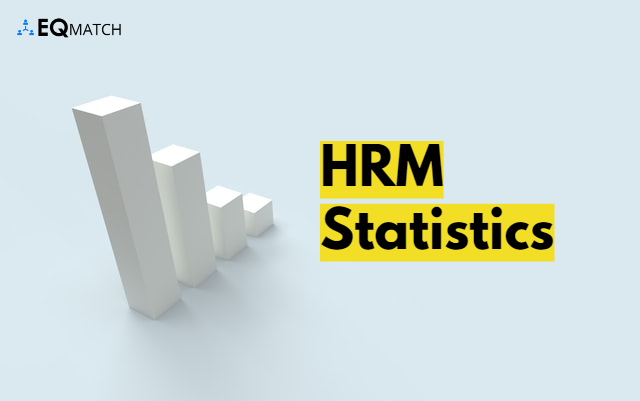Isn’t it interesting that human resource management started as personnel management?
That is, it was concerned only with basic hr functions.
With the costs of employee turnover ranging from 30% to 150% of the employee’s salary, the role of human resource management becomes more important than ever.
Human Resource Management Definition
What is human resource management?
As per the society of human resource management (SHRM), human resource management (HRM or HR) involves managing the employees of a business.
It is a strategic approach to people management in a company for gaining a competitive advantage.
I love this quote on human resource management by Lawrence Bossidy:
“I am convinced that nothing we do is more important than hiring and developing people. At the end of the day, you bet on people, not on strategies.”
HRM also goes by terms such as talent management, people management, workforce management, and personnel management.
History Of Human Resource Management
Let’s talk a little about the evolution and origin of human resource management.
The HR field dates back to the nineteenth century in Europe.
The concept of human resources was built during the industrial revolution.
In this regard, the works of Robert Owen and Charles Babbage were instrumental.
These thinkers pushed forward the notion that human beings were crucial to the success of a business.
The duo argued that employee well-being leads to a perfect work environment.
And a company would perish in the absence of healthy workers.
Fast forward to the 20th century, Frederick Winslow Taylor introduced the concept of scientific management to improve economic efficiency in manufacturing units.
This further led to an increased focus on workforce productivity.
In 1921, C S Myers founded the National Institute of Industrial Psychology (NIIP).
This was an important development in the growth of human resources management.
Thanks to changes in the business domain and public policy, the HRM discipline was formally adopted as industrial and labor relations.
The Personnel Research Federation was established as a result of James R. Angell’s speech (1920) highlighting the importance of personnel research.
In 1945, the School of Industrial and Labor Relations took birth at Cornell University in the US.
And in 1948, the largest professional HR association, SHRM (Society for Human Resource Management) was formed.
The actual name “SHRM” was adopted in 1998. Before that, it was called ASPA.
The end of the twentieth century witnessed a decline in union membership and a rise in workforce-management experts.
It is interesting to note that a large majority of current HR practices began with businesses trying to develop and retain talent in the 1950s.
With advancements in transportation and communications towards the end of the 20th century, workforce mobility and collaboration witnessed more attention.
Companies started seeing employees as assets.
Hope this helps you understand where did human resource management originate.

Fundamentals Of Human Resource Management
Let us summarize what are the objectives of human resource management.
Here are the most important aspects of human resource management.
Recruitment
Talent management is responsible for advertising jobs and recruiting employees.
HRM uses information systems and tools to identify qualified candidates from the applicant pool.
Human resources professionals ensure that the screening process is compliant with employment laws such as the EEOC.
Performance Management
Human resource management is in charge of the annual performance review.
HR professionals play a key role in organizing and implementing performance reviews to help managers identify and improve performance issues.
Employee Training & Development
It is not enough to hire the best employees.
Training them and making sure they are on top of the latest tools and strategies is core to business growth.
Human resource management oversees career development and learning opportunities for employees.
Succession Planning
Employee retention is one of the biggest issues today.
When an important employee leaves a company unexpetedly, it creates a host of issues for the team and the company.
HR professionals lead talent management efforts to bolster succession planning strategies.
Employee Benefits
Handling both primary and secondary compensation falls under the wheelhouse of human resource management.
Primary benefits, as you know, include the base salary and performance-based pay.
And secondary compensation could include remote work, flexible timings, and other non-financial rewards.
Tools & Technologies
Without the right information systems, human resource professionals can end up spending a lot of time doing manual, repetitive work.

Download our Human Resource KPI dashboard template FREE
Since HR professionals also have to report on key metrics and KPIs, they evaluate and use robust and intelligent tools and technologies to optimize HR processes.
We will talk about these in detail a little later.

Why human resource management is important?
Let’s dive into the specific areas to understand the importance of HR managers in organizations.
This will also help you understand- what are human resource management responsibilities.
Strategy Management
HRM plays a key role in keeping a business aligned with its goals and objectives.
Human resource management also contributes to corporate decision-making.
From assessing existing employees to projecting (and predicting) future employees, HRM does it all.
Hiring & Training
Human resource professionals recruit, hire and train new employees.
HR managers find the right candidates, review resumes, conduct interviews, perform background checks, and lead employee training and onboarding.
The HR department plays an important role in promoting diversity (DEI) and helping maintain a healthy relationship between employees and leaders.
Employee Well Being
The HRM is also responsible for keeping employees happy and safe.
Human beings are prone to having issues- the workplace is no exception.
HR professionals stay on top of protective measures and solutions to address issues between employees.
This reduces risk both for the employees and the business.
Ensuring employee wellbeing is one of the key functions of human resource management.
Managing Company Risk
There is an immense need for human resource management in managing risk and compliance for businesses.
HR professionals analyze statistical risks, address and prevent potential lawsuits, implement diversity training, improve hiring processes, and supervise firing practices.
Employee Payroll & Benefits
We all, to some extent, work for money.
Even if you are happy at a job, you might not last if the job does not pay well.
The functions of human resource management involve handling employee payroll and benefits.
For example, human resource professionals negotiate insurance packages with vendors.
They organize employee paperwork, keep track of payroll, create 401k and pension plans; manage vacation time, paid time off, and sick leave; and communicate benefits to new hires.
In short, the objectives of strategic human resource management include the following:
- Realizing organizational goals
- Improving Work Culture
- Integrating, training, and developing teams
- Motivating Employees
- Empowering workforce
- Retaining Employees
- Data and Compliance
Without proper human resource management, businesses might cease to function.

Top Human Resource Management Challenges
Human Resource Management is evolving.
And with changing dynamics of the workplace and other factors, HRM is also undergoing a slow but sure change.
Let’s talk about some of the biggest challenges in human resources today.
Employee Engagement
As per Gallup, a mere 36% of US employees are engaged in their work.
Talking in terms of ratio, the engaged to actively disengaged workers in the U.S. stands at 2.4 to 1.
And you might already know that disengaged employees cost an estimated $450 to $550 billion annually to US businesses.
Talent Acquisition
Attracting Talent is another big challenge in human resource management.
In this time of the Great Resignation where US unemployment is at historical lows, more and more companies are finding it difficult to fill open roles.

As per economic data, voluntary resignations have hit a record high (13% YoY).
Employee Training & Development
Human resource management needs to work on upskilling and reskilling to improve the bottom line.
However, traditional methods of professional development might not be sufficient.
HR professionals need to focus both on technical skills and long-term transferable skills.
This is because, unlike technical skills, long-term skills such as social and emotional intelligence have greater longevity.
Employee Retention
Today, human resource professionals face the ever-growing issue of retaining employees.
There is no shortage of jobs for skilled employees today.
Given the right work environment, perks, and salary, an employee might move to another company.
This is why human resource professionals must examine talent retention closely.
They should try to understand why employees are quitting.
Exit interviews could be useful in this context.
Diversity, Equity, and Inclusion
DEI efforts are mandatory for business growth in these unpredictable times.
As per McKinsey, businesses that adopt DEI are 25% more likely to be profitable than companies that do not adopt DEI initiatives.
Human resource management focusing on diversity initiatives can boost employer branding, and improve talent acquisition.
Candidate Ghosting
No one likes to be ghosted.
In the human resource world, candidate ghosting has seen a 10% growth YoY.
Inconsistent/lack of communication is the key reason why candidates ghost an employer or HR.
Other causes of candidate ghosting include a lack of role clarity and a poor interview process.
Changing Employee Priorities
The priorities of job applicants and employees are changing.
Just having a job is no longer the sole criterion for a candidate or an employee.
They want flexible/remote work environments, professional growth, salary growth, and a better employee experience overall.
Optimized Recruiting Process
Human resource professionals are embracing tools and solutions to improve the recruiting process.
HR is moving away from a traditional, lengthy application process to a fast, nimble hiring structure.
As per Glassdoor, a mere 10% reduction in online job application time can boost the number of mobile job applicants by 2.3%.

Top HR Trends
The key human resource trends to watch for include a transition towards a hybrid work model, DEI, Gig economy, upskilling & reskilling, and cyber security.
Here is a cool overview of the top HR trends from Selecthub (See image above).
Learn more about the top HR trends that will shape the future.

Top HR Software & Tools
Human resource professionals understand the importance of using the right tools for talent acquisition and recruiting.
As per PWC, 44% of HR managers turn to cloud-based HR software to increase efficiency and productivity.
It is easy to be overwhelmed by the massive number of hr tools out there.
You certainly do not need all of them to succeed in human resource management.
Let’s talk about some of the most important hr software solutions for human resource management.
Human resource software or tools fall into the following main categories:
- Recruitment
- Interviewing
- Skills assessments
- Personality Assessments
- Onboarding
- Talent attraction
- Employee engagement & Employee feedback
- HR management
- Performance management
- Training and development
- Payroll and benefits management
- Employer brand management
Tools for Recruitment
As a human resources professional, you know how much time and energy goes into recruiting.
From writing job descriptions to posting them on different sites, the recruiting process can be daunting.
This is why most HR professionals use an applicant tracking system (ATS).
A good ATS would help you automate different areas of recruiting such as sourcing, job posting, and more.
Tools for Interviewing
As I wrote earlier, the HR landscape is changing.
Traditional interviews are no longer the best way to attract and engage candidates during the recruiting process.
With video interviewing platforms, you can make interviews interactive and engaging.
Skills Assessment
Pre employment recruitment tools can help assess the skills of job applicants.
Thanks to advanced skills assessment solutions, you can leverage standard tests as well as customized tests to gauge the skills of the applicants.
Personality Assessments
These are perhaps one of the most important HR software tools.
We have talked about why HR professionals should prioritize work attitude over skills in a separate blog post.
You do not want to hire a candidate only to learn later the person is not a good fit for your team or company.
An emotional intelligence personality assessment test can help you throw light on areas that the resume fails to capture.
You might have heard of assessments such as the Myers-Briggs or DiSC assessment.
Not all personality assessment tests are created the same.
Which is the Best Personality Assessment for Hiring
Onboarding Tools
An onboarding hr software can save you time through time tracking and reporting features.
Talent Attraction Tools
There is a reason why the LinkedIn job posting is famous with hr departments of businesses small and large.
Such talent attraction tools can help you connect with the right talent.
Employee Engagement & Feedback Tools
A key part of human resource management is engaging the employees.
With employee engagement software, you can engage your team through surveys, and identify and measure staff morale.
Likewise, employee recognition or feedback tool can help HR professionals build trust and loyalty among employees.
HR Management Software
These solutions integrate with all areas of HR and help streamline HR processes.
Performance Management Tools
Do not think of performance management as a one-and-done kind of affair that happens quarterly or yearly.
HR professionals should manage performance consistently to make important decisions related to compensation and succession planning.
Employee Training & Development Tools
More and more employees want to polish their skills.
That is why online learning is increasingly popular today.
You should invest in software that allows you to deliver ready-made courses and build courses.
Platforms that allow learning gamification have an edge over traditional e-learning tools.
Payroll and benefits management
While finance owns payroll and benefits management, these need to be integrated with HR management systems for streamlining processes.
Employer Brand Management
Lastly, we have brand management tools.
These integrate with social media platforms and job boards to facilitate employer branding.
Learn Human Resource Management
Like any other field, HRM involves constant learning.
There are several online human resource management courses to help you expand your knowledge.
And if you are a fan of reading, here are some of the best books on human resource management:
- Human Resource Management by Gary Dessler
- Human Resource Management by Laura Portolese.
- The HR Scorecard by Brian Becker
- Victory Through Organization
- Investing in people. Financial Impact of Human Resource Initiatives
For journal lovers, here are the top 10 journals in human resource management:
- Academy of Management Annals
- Annual Review of Organizational Psychology and Organizational Behavior
- Organization Science
- Personnel Psychology
- Journal of Human Resources
- International Organization
- Leadership Quarterly
- Organization Studies
- Journal of Service Research
- Research in Organizational Behavior

Key Statistics about HRM
Let’s throw light on some statistics as it relates to human resource management.
We will break them down into two specific categories for clarity.
Employee Engagement and Retention
61% of employees in the United States feel burned out at work.
Sadly, more than 30% of employees do not trust their employers.
Over 75% of employees leave their jobs because of their bosses.
Each year, US businesses lose close to $500 Billion due to low employee engagement.
Diversity Statistics
As per Glassdoor, 67% of job seekers consider workplace diversity an important factor when considering employment opportunities.
And a study done by Fast Company suggests that companies with above-average gender diversity and levels of employee engagement outperform companies with below-average diversity and engagement by 46% to 58%.
HBR (Harvard Business Review) wrote that businesses with higher than average diversity have 19% higher innovation revenues.
Wrapping Up
As you see, human resource management is a complex domain.
It is critical for businesses small and large.
The future of human resource management will see personalized review systems, tech-driven HR leadership, AI for creating a diverse workforce, and overall, a more agile human resource system.






No responses yet